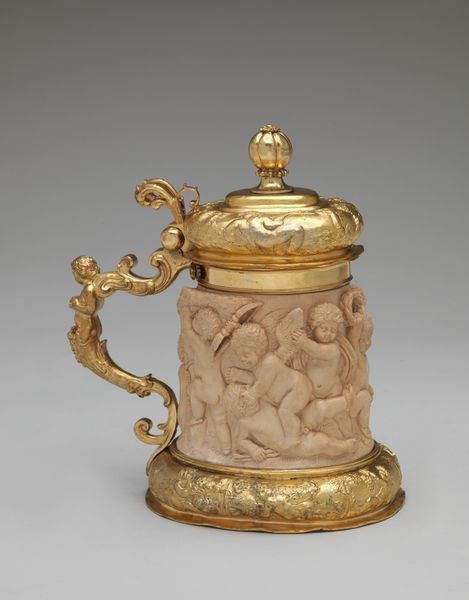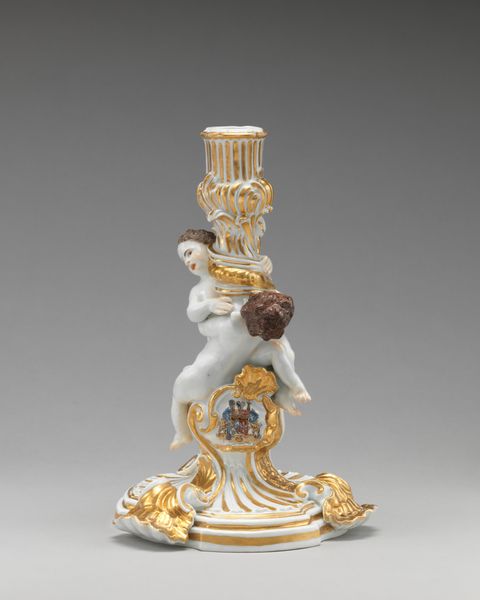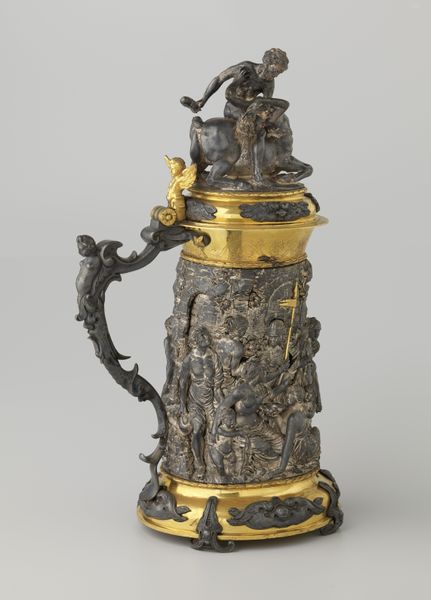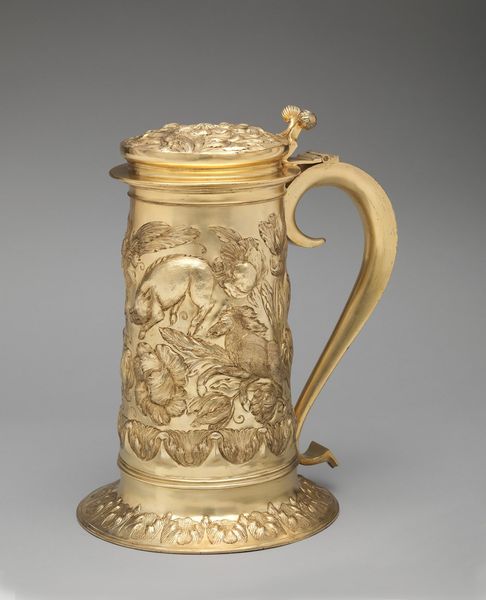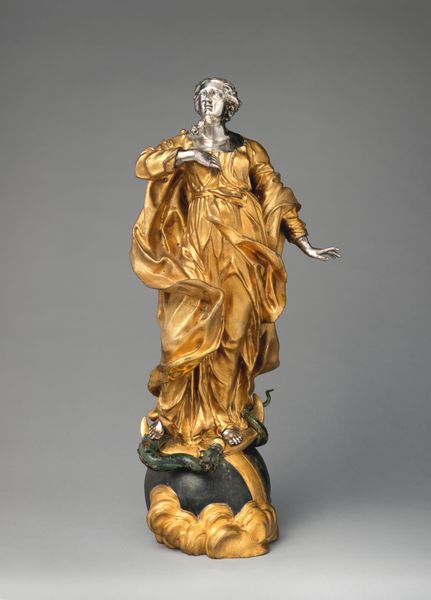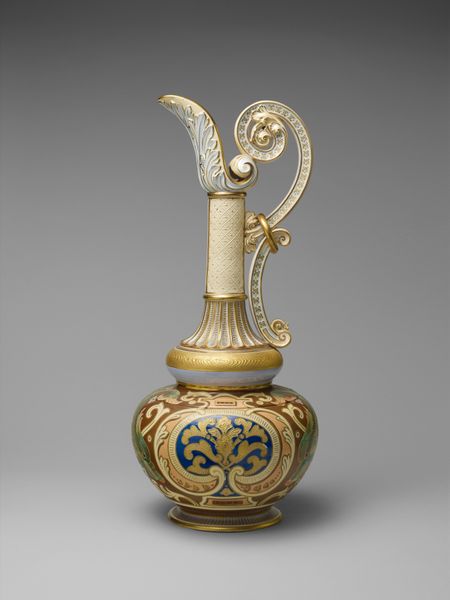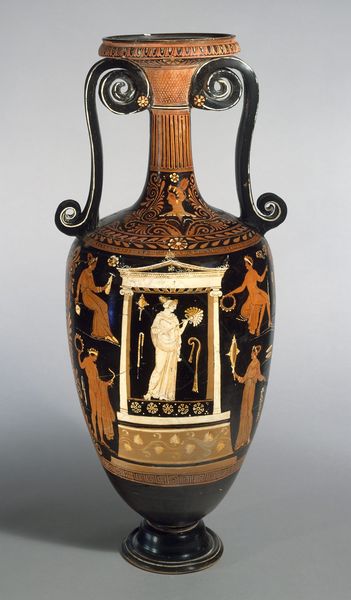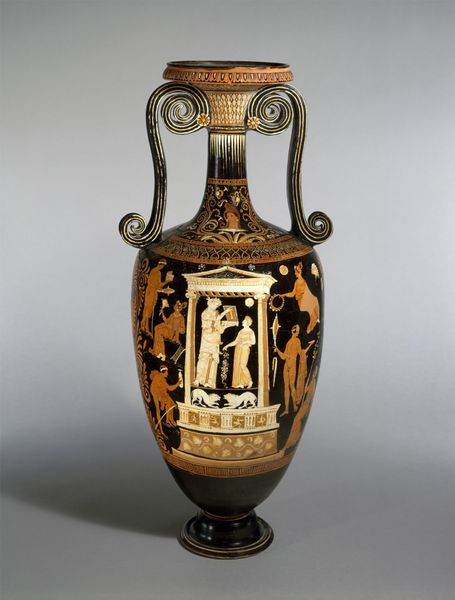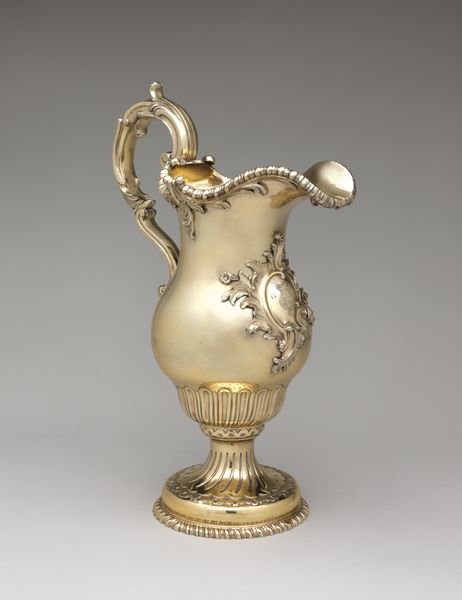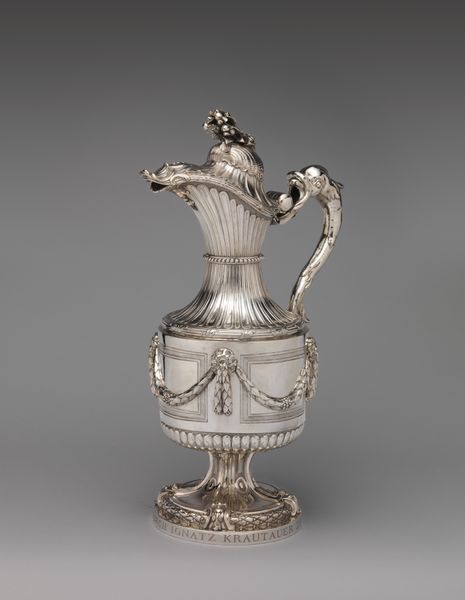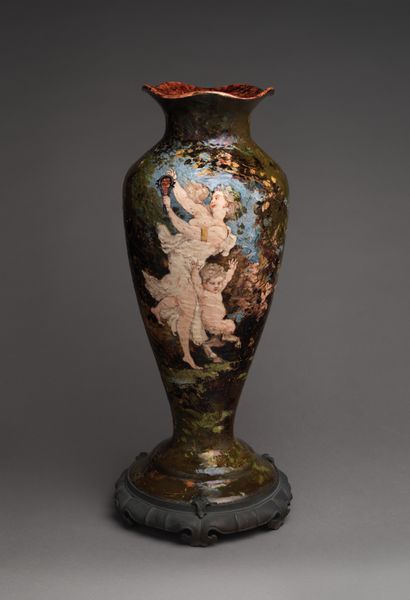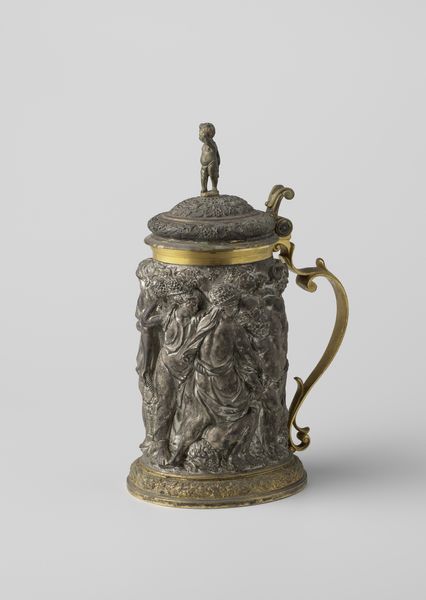
relief, sculpture, ivory
#
baroque
#
relief
#
figuration
#
stoneware
#
sculpture
#
ceramic
#
decorative-art
#
ivory
Dimensions: Overall: 19 3/8 × 11 1/2 × 7 1/4 in. (49.2 × 29.2 × 18.4 cm)
Copyright: Public Domain
Curator: What strikes me first about this tankard is its overwhelming sense of ornate drama. Editor: Exactly. Let's introduce our listeners to this intriguing object. What we have here is a Baroque tankard with a cover, crafted sometime between 1685 and 1699. The piece is attributed to Franchi and Son. It's an example of decorative art, incorporating ivory, stoneware, and touches of metalwork. Curator: The ivory reliefs command immediate attention, don't they? All those figures twisting and gesturing. It speaks to the cultural memory of classical mythology—violence, passion, even chaos are all there, intertwined. But I wonder about its practical function. A tankard... did it actually get used, or was it purely ornamental? Editor: That's a key question. The presence of the handle and lid implies use, but the incredibly detailed and fragile ivory carving suggests a more ceremonial purpose. These objects often acted as signifiers of status and wealth within a social setting. Think of the politics of imagery, how the display of mythological scenes communicated the owner's knowledge and refined tastes. Curator: You're right, the social symbolism is evident. But looking beyond that, consider the choice of figures. We see a clear interest in figuration and possibly a reflection of then-contemporary cultural values placed on heroism and power, wouldn’t you say? Perhaps those narratives resonated deeply for people in that era. Editor: Undeniably. And we need to remember that the museum plays an active role here as well, determining how it should be displayed. The placement helps to enhance that ceremonial role, and shapes a certain view. Curator: But that touches upon the emotional impact and psychological weight of this tankard. The imagery itself could inspire introspection regarding power, virtue, the consequences of our decisions, and mortality. Editor: The power of objects from the past to echo still further across time? Indeed. This conversation highlights the different lenses we bring when looking at cultural heritage—utility versus symbolism, artistry versus function, then vs. now. Curator: Ultimately, this piece serves as a striking testament to the skilled artists and social milieu that created it, whatever symbolic and material considerations guided their vision and labour.
Comments
No comments
Be the first to comment and join the conversation on the ultimate creative platform.
